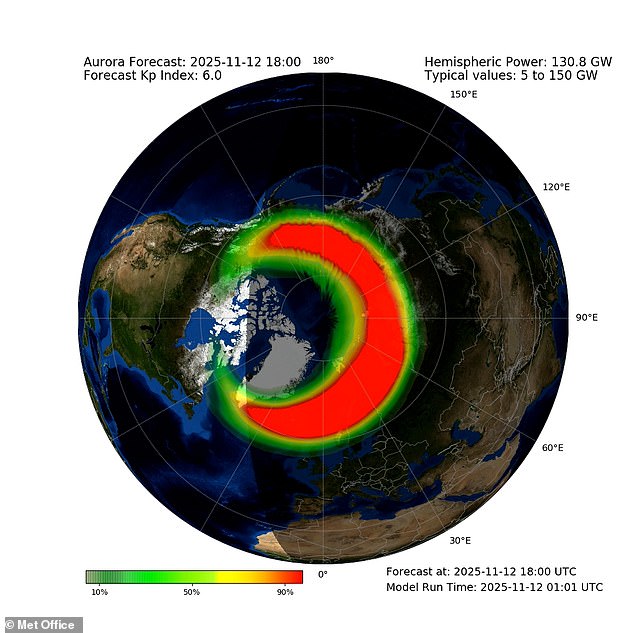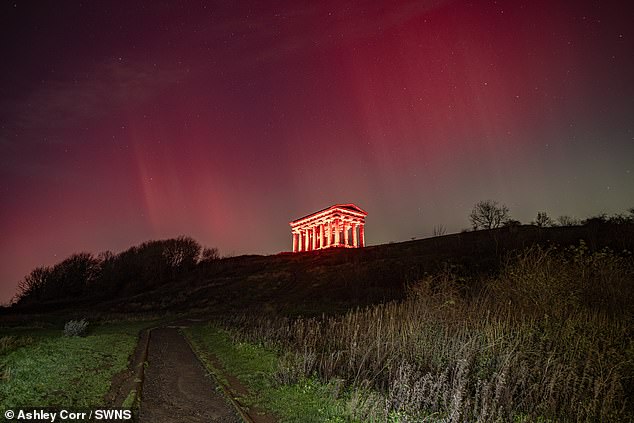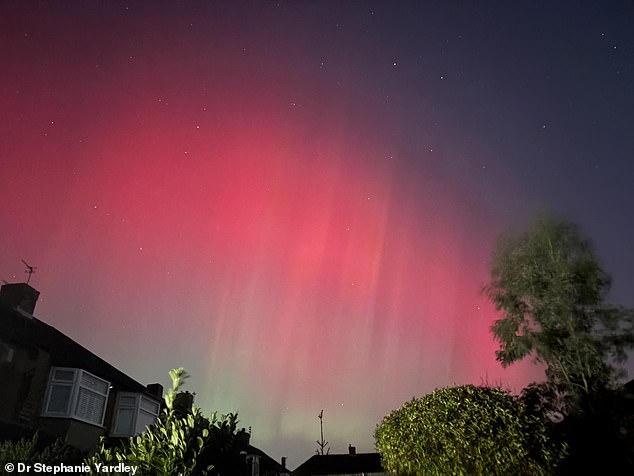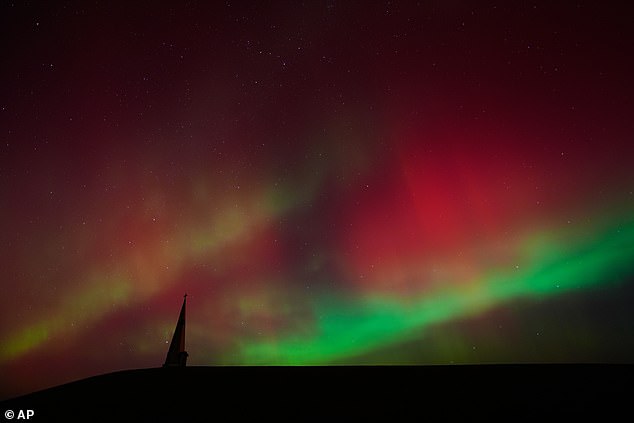Skygazers across much of the UK could be treated to a rare view of the Northern Lights tonight thanks to a ‘severe’ geomagnetic storm triggered by the Sun.
Forecasters say a coronal mass ejection (CME) is expected to arrive this evening, prompting a stunning light display.
This should be visible across much of the northern UK – with a chance of sightings further south across England and Wales.
It marks the second night in a row that Earth has been bombarded with huge bursts of charged particles from the Sun, which interact with our planet’s atmosphere and create the colourful light displays.
Photographs taken last night show skies over Whitley Bay, Northamptonshire, and Sunderland lit up in breathtaking green and red hues.
The National Oceanographic Atmospheric Administration (NOAA) measures the strength of these geomagnetic storms and places them into categories, from ‘minor’ G1 to ‘extreme’ G5. They say there is a chance of a strong G3 – or even severe G4 – geomagnetic storm being triggered this evening.
Unfortunately the Met Office said cloud cover ‘is expected to inhibit ideal viewing conditions for many parts’ – but there is still a chance to spot the lights during clear intervals.
Scroll down to see if the Northern Lights will be visible in your city tonight.

The Northern Lights glowing in the sky over St Mary’s Lighthouse in Whitley Bay on the North East coast

According to the Met Office, visible aurora is expected across parts of northern UK with a chance of sightings further south across England and Wales

Skywatchers were treated to an incredible celestial display at Harrington in Northamptonshire last night
The solar flare that erupted from the Sun on early Tuesday morning was identified as the largest in 2025 so far.
It came from sunspot AR4274, which has been highly active in recent days, producing two other significant flares on November 9 and 10.
Geomagnetic storms – even at this severe level – are not dangerous for humans on Earth because we are protected by the atmosphere.
However it could disrupt satellites, power grids and some electronic devices such as mobile phones.
‘The Northern Lights are caused by eruptions from the Sun hitting Earth and their interactions with the Earth’s magnetic field and particles in the atmosphere,’ Dr Stephanie Yardley, solar physicist at Northumbria University told the Daily Mail.
‘Currently, there are three eruptions on their way to Earth, the first arriving last night and the last – probably the most intense one – to hit either today or tomorrow.
‘These intense storm conditions are fairly rare, only a few times per 11–year solar activity cycle, and we briefly reached G5 (extreme) geomagnetic storm conditions last night.
‘We should expect severe geomagnetic storm conditions and displays of the northern lights to continue for the next few days.’

The Northern Lights were also visible at the Penshaw Monument in Sunderland with vibrant hues of pink, green and purple lighting up the skies

Solar physicist Dr Stephanie Yardley snapped this stunning photograph over Newcastle last night

The Northern Lights are caused by eruptions from the Sun hitting Earth. Pictured: The solar flare that erupted from the Sun early on Tuesday was identified as the largest in 2025

The spectacular display was also seen in in the US, with this photograph taken near Valley Falls in Kansas
Dr Yardley caught a stunning photograph of the skies above Newcastle and shared it on X in the early hours of this morning, adding: ‘This is not a drill! Go outside!’
‘To see the aurora you need cloud free skies away from light pollution and need to look north,’ she explained.
‘Although, during the most energetic displays and depending on your location you may need to look overhead or to the south.
‘If you can’t see the aurora with your naked eye you can take long exposure shots in night mode on your phone camera.’
